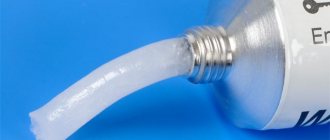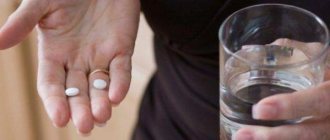Author of the article
Daria Shirochina
Practitioner. She graduated with honors from Vitebsk State Medical University in 2012 with a degree in general medicine. She was awarded a certificate of honor for her achievements in her work.
Ask a Question
"Senna D" is a natural laxative that improves intestinal motility and restores the balance of natural microflora. They use the product to normalize stool and the digestive process, for weight loss and cleansing the body. But first, it is advisable to consult a doctor to identify possible contraindications for use.
Chronic constipation is a disease of civilization
Over the past 10 years, there has been a significant increase in the number of patients suffering from defecation retention. People complain of a prolonged absence of bowel movements or of insufficient bowel movements.
Professor N.B. Gubergrits provides interesting statistical data in his works:
- Constipation occurs in 12% of the world's inhabitants.
- About 50% of the population of Russia and Great Britain are periodically forced to treat this problem.
- In Germany and France the figure is lower - 30% and, respectively, 20%.
Data are provided only for patients seeking help from official medicine. But many people prefer to hide a delicate problem, using folk recipes and available pharmacy laxatives.
This prevalence of constipation is explained by several factors:
- Leading a sedentary lifestyle, lack of physical activity.
- Exclusion of soups from the diet, addiction to fast food, non-compliance with food intake.
- Insufficient consumption of fruits and vegetables, water.
- Therapy with medications that affect intestinal motility - tranquilizers, anticonvulsants, diuretics, narcotics.
- The presence of diseases that slow down peristalsis. These include obesity, liver and gall bladder problems, emphysema, diabetes mellitus, neuroses and psychoses, heart and pulmonary failure.
- Bad habits, air pollution, working in production with poor conditions.
- Adhesions in the abdominal cavity, formed as a result of surgery, compressing the intestines.
The development of constipation leads to intoxication of the body, in which toxic compounds do not come out with feces, but penetrate into the bloodstream. As a result, almost all systems suffer, and immune defense decreases. A person loses appetite, the skin becomes flabby, headaches and attacks of nausea often occur, and constant fatigue is noted, leading to irritability.
Consequences of taking laxatives without dietary fiber
There are many drugs available in pharmacies that can quickly relieve constipation. But the choice must be made with caution.
For example, deaths from colon cancer are rising in the United States. According to statistics, out of every 100,000 Americans, 58 people suffer from this disease. Among the reasons for the prevalence of this type of cancer, experts identify prolonged use of laxatives.
A scientific study was conducted at the Fred Hutchinson Cancer Center to identify the connection between drugs and colorectal cancer. More than 75,000 people were observed. It has been established that in the age group of 50–76 years, the use of drugs that do not contain plant fibers increases the risk of malignant tumors.
Probably, natural components stimulate the development of beneficial microflora and improve the passage of feces, reducing the penetration of toxins into the blood.
In the United States, the Federal Food and Drug Administration has proposed banning laxatives that contain phenolphthalein. It has been revealed that therapy with such drugs often provokes cancer. In Russia, a drug with this ingredient, Purgen, is also widely used.
Comparison of safety of Senna-da and Senadya
The safety of a drug includes many factors.
At the same time, in Senna it is quite similar to Senadem. It is important where the drug is metabolized: drugs are excreted from the body either unchanged or in the form of products of their biochemical transformations. Metabolism occurs spontaneously, but most often involves major organs such as the liver, kidneys, lungs, skin, brain and others. When assessing metabolism in Senna, as well as in Senad, we look at which organ is the metabolizing organ and how critical the effect on it is.
The risk-benefit ratio is when the prescription of a drug is undesirable, but justified under certain conditions and circumstances, with the obligatory observance of caution in use. At the same time, Senna-da does not have any risks when used, just like Senad.
Also, when calculating safety, it is taken into account whether only allergic reactions occur or possible dysfunction of the main organs. In other matters, as well as the reversibility of the consequences of using Senna and Senad.
Medicinal properties of "Senna D"
In contrast to synthetic and hazardous medications, the use of natural laxatives is recommended. For example, a plant-based product has received approval from doctors. It is worth familiarizing yourself with the properties of Senna D in more detail.
Compound
Available in tablet form. Blisters containing 10, 15, 20 pieces are available for sale. There are also plastic jars with 50–100 pcs. ODO "Amateg" Depending on the packaging, the price ranges from 30–60 rubles.
As part of "Senna D":
- Powder of the leaves of the plant of the same name.
- Crushed rhizomes of tall elecampane.
The following additional components are present:
- microcrystalline cellulose;
- lactose monohydrate;
- calcium stearate;
- talc;
- anti-caking agents.
“Senna D” is classified as a herbal dietary supplement that has a minimum of prohibitions for use.
From source to mouth
The river originates on the Langres plateau. It is part of the Paris Basin. This is a hilly plain on which most of France is located. The maximum height of the plateau is 532 meters above sea level. The source of the river is in Burgundy (historical region in eastern France) at an altitude of 471 meters above sea level. This is the commune of Côte d'Or, located 30 km northwest of the city of Dijon.
The source is located in a wooded area next to road No. 71. There is a sign on the side of the road informing everyone passing by that very close by, in a ravine, a stream gushes out of the ground, giving rise to the water stream on which Paris stands.
The riverbed runs through a wide valley and is characterized by being very winding. It is nothing more remarkable, since it is flat in nature. Therefore, it cannot boast of stormy waterfalls, rapids and rapid whirlpools. Pleasure yachts and excursion boats scurry along the water surface. Within Paris, the length of the river is 50 km. There are 37 bridges on this stretch of water. There are dozens of them on the river in total.
On the northwestern tip of France is the city of Le Havre. This is the right bank of the Seine estuary. The mouth itself is an estuary. Its length is 25 km and width 2-12 km. Le Havre is home to one of the country's largest seaports. On the left bank of the estuary is the city of Honfleur. It also has a port, which is ancient and very picturesque. The city itself has many magnificent architectural structures.
It is Le Havre and Honfleur that are connected by the Normandy Bridge. The main tributaries are: Marne, Yonne, Oise, Ob. Large cities: Paris (population 2.3 million), Le Havre (188 thousand people), Rouen (106 thousand people) and Poissy, located next to Paris and having a population of 38 thousand people.
Seine River on the map
Characteristics of the river
The main supply is from rain. The water level rises in autumn and winter. In summer there is low water. Water consumption in the capital of France is 250 cubic meters. m/sec. Within the boundaries of the mouth, the flow reaches 500 cubic meters. m/sec. During high tide, the water rises in the estuary by 2 meters. In the Le Havre area, a value of 7.5 meters was recorded. During floods, the river overflows, but in cities there are no floods due to hydraulic safety measures.
Shipping
Sea vessels travel upstream as far as Rouen. It is 120 km from the English Channel. Commercial river boats travel 560 km to Bar-sur-Seine. Taking into account the tides, ships travel to Rouen along a bypass canal. The Seine River is also connected by a whole network of canals to the Rhine, Loire, Meuse, Somme and Scheldt. The main ports are in Paris, Le Havre and Rouen.
Ecology
In 2009, salmon appeared in the river after many years of absence. This indicates that the water is significantly cleaner than it was before. And at the end of the 20th century, the concentration of heavy metals in water was very high. The pH level was 4 times higher than normal. But people built treatment plants, tightened control over wastewater discharge, and the situation improved significantly. This indicates that if desired, positive results can be achieved and the water can be made suitable for drinking and bathing.
Alexander Arsentiev
Indications for use
"Senna D" is recommended if you have the following problems:
- chronic constipation;
- atony of the large intestine;
- haemorrhoids;
- proctitis;
- colitis;
- anal sphincter fissures;
- pathologies of the liver and gallbladder:
- loss of appetite;
- obesity;
- pyoderma;
- oligomenorrhea;
- glaucoma, conjunctivitis.
The use of dietary supplements normalizes the water-salt balance and eliminates swelling.
The effect of "Senna D" on the functioning of the gastrointestinal tract
The product contains the senna plant, which has a laxative effect. Stool excretion is observed after 10–12 hours. The effect is aimed at irritating intestinal receptors and facilitating bowel movements. At the same time, there is no negative impact on the digestive processes, and dysbacteriosis is not provoked.
Improving colon peristalsis
The leaves of the senna plant contain anthran lycosides. These are natural stimulants of emptying that do not cause malabsorption of components. The substances are well tolerated by the body and do not cause poisoning when accumulated. The laxative effect, thanks to these components, is observed 8–10 hours after administration.
Senna leaves contain a small amount of resins that irritate the mucous membranes of the tract.
Elecampane restores microflora balance and stimulates intestinal motility
This plant enhances the effectiveness of Senna D. The roots contain inulenin, as well as inulin, polysaccharides that stimulate organ motility and restore microflora.
These components are, in fact, plant fibers. Inulin is digested by beneficial bacteria in the colon, causing the growth of lactobacilli and bifidobacteria. At the same time, it reduces the proliferation of clostridia, which provoke botulism, tetanus and gas gangrene, and enterococci.
When it enters the stomach, the substance dissolves to a gel state and envelops the mucous membranes of the gastrointestinal tract, preventing irritation.
The rhizomes contain helenin, which has antiseptic and bactericidal effects.
Comparison of the effectiveness of Senna-da and Senad
The effectiveness of Senna-da is quite similar to Senadem - this means that the ability of the drug substance to provide the maximum possible effect is similar.
For example, if the therapeutic effect of Senna is more pronounced, then using Senad even in large doses will not achieve this effect.
Also, the speed of therapy - an indicator of the speed of therapeutic action - is approximately the same in Senna-da and Senad. And bioavailability, that is, the amount of a drug reaching its site of action in the body, is similar. The higher the bioavailability, the less it will be lost during absorption and use by the body.
Directions for use and dosage
Senna D is taken before bed on an empty stomach. The instructions contain a detailed description of the recommended amount:
- Adult patient 2–4 tablets.
- For a child over 6 years old, 1–2 pcs.
Senna D should be taken for no longer than 1 week. If it is necessary to extend the course, consult a doctor.
For weight loss
Obesity is often caused by metabolic disorders. Toxins present in tissues slow down metabolism. As a rule, in such a situation, diets and low-calorie meals are useless; even resorting to them, a person continues to gain weight. For a balanced diet to have an effect, preliminary cleaning is necessary.
Senna D for weight loss helps remove toxic substances and improves the breakdown of fats. The anthraglycosides contained in the plant are converted into anthraquinones in the intestinal tract, which contribute to increased motility. The passage of food is accelerated, so there is no accumulation of toxins and waste. As a result, fatty acids are not absorbed and weight gain is inhibited.
Elecampane also helps you lose weight. The gum present in the roots dulls hunger. Inulin and helenin stimulate the secretion of bile. Essential oils and saponins prevent the development of swelling.
Thanks to "Senna D" there is a complex effect that provides physiological weight loss.
Read also[edit | edit code]
- Marsh rosemary
- Hawthorn
- Elecampane P
- blooming Sally
- Calendula P
- Castor oil
- Nettle P
- Linden
- Bulb onions
- Flax seed
- Coltsfoot
- climbing ivy
- Plantain lanceolifolia
- Revital garlic pearls
- Rhubarb
- Chamomile flowers
- Sundew
- Licorice
- Thyme
- Javan turmeric
- Yarrow
- Fennel
- Blueberry
- Garlic
- Sage
- Eucalyptus
- Enterosgel
Side effects
The use of dietary supplements sometimes provokes negative consequences. These include:
- anorexia;
- diarrhea;
- epigastric pain;
- hypokalemia;
- change in urine color;
- allergies;
- dehydration;
- increased flatulence;
- hematuria;
- albuminuria;
- intestinal atony;
- pseudomelanosis.
If side effects develop after taking Senna D, stop therapy and consult a doctor about a replacement.
Comparison of habituation in Sennad and Senad
Like safety, addiction also involves many factors that must be considered when evaluating a drug.
So the totality of values of such parameters as “syndrome” in Senad is less than similar values in Senna. Withdrawal syndrome is a pathological condition that occurs after the cessation of intake of addictive or dependent substances into the body. And resistance is understood as initial immunity to a drug; in this it differs from addiction, when immunity to a drug develops over a certain period of time. The presence of resistance can only be stated if an attempt has been made to increase the dose of the drug to the maximum possible.
Contraindications
The instructions for use of Senna D clearly state the prohibitions:
- Spastic constipation and colitis.
- Acute inflammation of the abdominal organs.
- Appendicitis.
- Intestinal obstruction.
- Perforated ulcer.
- Strangulated hernia.
- Metrorrhagia.
- Exacerbation of hemorrhoids, proctitis.
- Cystitis.
- Gastrointestinal bleeding.
It is contraindicated to take Senna D during pregnancy. Increased intestinal motility can provoke uterine tone and lead to miscarriage.



